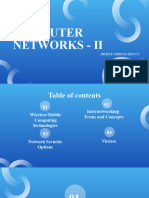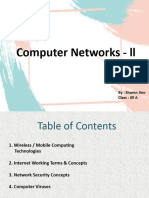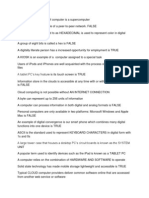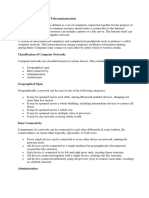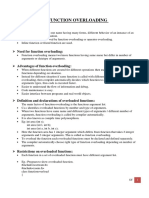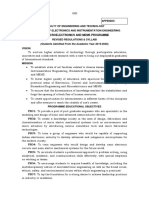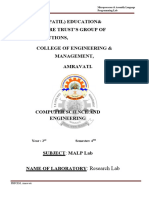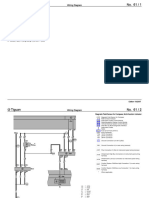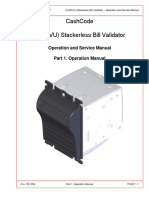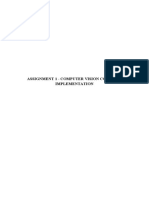0% found this document useful (0 votes)
17 views14 pagesComputer Studies Research Assignment
This research assignment by Judith Bragg explores fundamental concepts of computer studies, including definitions of computers and the World Wide Web, networking protocols like HTTP and FTP, and the role of ISPs and antivirus software. It also covers legal aspects such as copyright and intellectual property rights, as well as different types of network infrastructures like LAN, WAN, and MAN. The assignment aims to enhance understanding of how these technologies impact communication, education, and business in the digital age.
Uploaded by
Andrew Mark HigginsCopyright
© © All Rights Reserved
We take content rights seriously. If you suspect this is your content, claim it here.
Available Formats
Download as DOCX, PDF, TXT or read online on Scribd
0% found this document useful (0 votes)
17 views14 pagesComputer Studies Research Assignment
This research assignment by Judith Bragg explores fundamental concepts of computer studies, including definitions of computers and the World Wide Web, networking protocols like HTTP and FTP, and the role of ISPs and antivirus software. It also covers legal aspects such as copyright and intellectual property rights, as well as different types of network infrastructures like LAN, WAN, and MAN. The assignment aims to enhance understanding of how these technologies impact communication, education, and business in the digital age.
Uploaded by
Andrew Mark HigginsCopyright
© © All Rights Reserved
We take content rights seriously. If you suspect this is your content, claim it here.
Available Formats
Download as DOCX, PDF, TXT or read online on Scribd
/ 14






